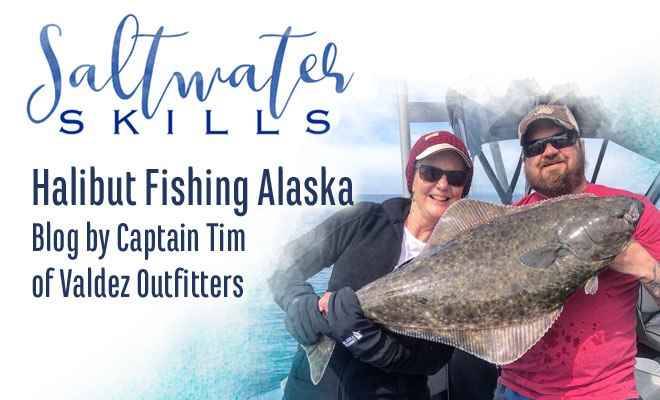 Halibut is the largest and the most sought-after sportfish in Alaska. Charters, rental boats, and private boats venture out daily during the summer season all across Alaska from Ketchikan to Adak targeting these large flatfish. These barn-door size fish draw anglers from around the world to try and catch the next world record or to fill the freezer with a fish that is some of the finest table fare there is.
Halibut is the largest and the most sought-after sportfish in Alaska. Charters, rental boats, and private boats venture out daily during the summer season all across Alaska from Ketchikan to Adak targeting these large flatfish. These barn-door size fish draw anglers from around the world to try and catch the next world record or to fill the freezer with a fish that is some of the finest table fare there is.
Halibut, specifically the Pacific halibut (Hippoglossus stenolepis), are found across almost all of the coastal waters of Alaska. Some of the individual fish will even visit the majority of the coastline of Alaska in their life time, with some reports of them migrating thousands of miles from the Bering Sea to Oregon.
A halibut starts its life journey when a female lays her eggs off the edge of the continental shelf in 1,200- to 1,800 feet of water. Each female produces 500,000- to 4 million eggs when they spawn, and after fertilization, a short 15 days later the eggs hatch into larvae. These free-floating larvae are swept up to shallow surface depth and drift with the dominate currents for hundreds of miles and for up to six months. During this time, they are developing their bodies. One of the most notable changes is their eyes migrating to be on one side of their bodies. They develop this and the brownish top side of their scales to hide from both prey and predators on the ocean floor.
After floating in the currents for six months many of the Alaska halibut end up in the shallow, nutrient-rich grounds of the Bering Sea. At this point they become bottom feeders and they spend the next 5- to 7 years feeding and growing, before they start their migration back. After this feeding frenzy they will migrate in a clockwise direction to the east and south throughout the Gulf of Alaska. Younger halibut make larger annual migrations while older halibut having a tendency to migrate less distance.
During the summer months, halibut feed in the shallower waters from 100- to 400 feet, where there are abundant prey fish. As strong predatory swimmers they feed on herring, cod, pollock, shrimp, crab, and many other small fish. This is why the majority of the sportfishing for halibut starts in May and runs into September. It is when the fish are easiest to catch with rod and reel due to where they are feeding and how often they are feeding. This holds true across the whole Southeast and Southcentral parts of Alaska.
Facts about halibut
- The Alaska state record sport-caught halibut is 459 pounds caught near Dutch Harbor in 1996. But the largest halibut officially recorded in Alaska was 495 pounds taken near Petersburg while commercial fishing. There are many old photos and tales of fish much larger.
- The oldest halibut recorded was a 42 year-old female, which live much longer than males, the oldest male was 27 years old.
- Almost all fish over 100 pounds are female, which grow faster and much larger than males.
- For the first month of their life, halibut have their eyes on both sides of their head.
- You can catch halibut in almost every port in Alaska, popular places are: Valdez, Whittier, Homer, Seward, Ketchikan, Sitka, Petersburg, Kodiak, and Dutch Harbor.
- Click here for a good resource on more life-cycle information
Now that we know a little about the life cycle and where halibut are found, join us in the next Saltwater Skills blog to learn about techniques on how to catch halibut.
Tim Bouchard is an experienced captain and the owner of Valdez Outfitters in Valdez, AK. He can be reached at info@ValdezOutfitters.com.
